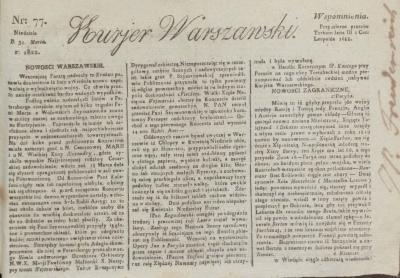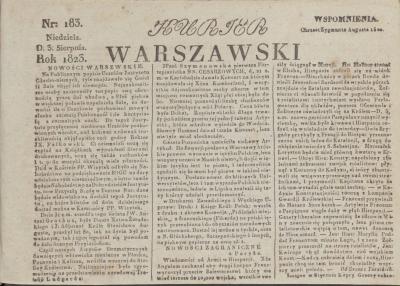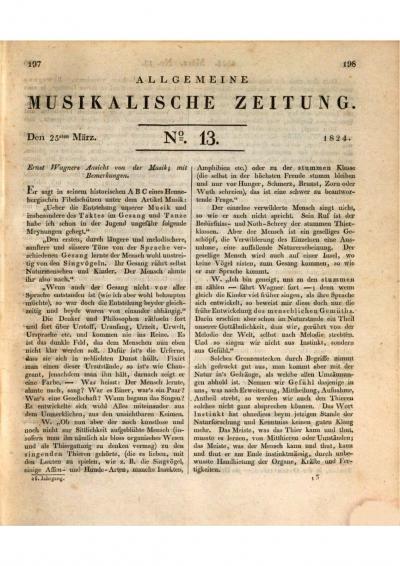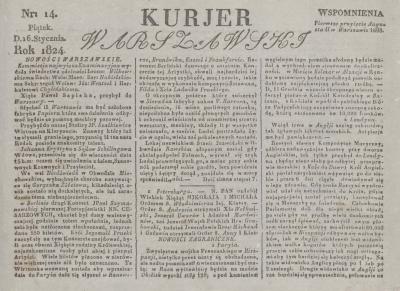Madame Szymanowska and Goethe – a burning love?

It is no secret that Goethe met the internationally renowned Polish pianist Maria Szymanowska and her sister Kazimiera Wołowska in August 1823 in the Bohemian health resort of Marienbad and some time later in Weimar. Nor is it a secret that he dedicated poems to both women, works of world literature whose first few lines are still quoted today. “Passion brings reason! – Who can pacify / An anguish'd heart whose loss hath been so great?”, he wrote for Szymanowska and created a lasting monument to her piano playing: “And then was felt, – oh may it constant prove!
– / The twofold bliss of music and of love.” He dedicated the following lines to her sister: “Your testament gives out the comely gifts, / With which mother nature completes you” and praised any man to whom she may belong in the future as fortunate: “But if you aspire to make a happy man, / It would be he to whom you give yourself completely.”
Both poems were published with the respective dedications “To Madame Marie Szymanowska” and “To Miss Kasimira Wolowska” 1828 in the earliest edition of “Goethes Werken. Vollständige Ausgabe letzter Hand” by Cotta in Stuttgart and Tübingen in the fourth volume in the section “Inschriften”.[1] The three verses for Szymanowska had already been printed, without the dedication, in the “Lyrisches” section in the third volume under the title “Aussöhnung” [“Atonement”] as a third part of the “Trilogy of Passion” following the poems “To Werther” and “Elegy”.[2] The most well known part of this trilogy is the middle part, which is known today as the “Marienbad Elegy”.
Readers first heard about Goethe’s personal appreciation of the Polish pianist in 1834 when correspondence between Goethe and the musician and composer Carl Friedrich Zelter, to whom Goethe had written on 24 August 1823 from Eger in Bohemia, was published by Goethe's secretary Friedrich Wilhelm Riemer: “In a completely different sense and yet with the same effect on me, I heard Mad. Szymanowska, an unbelievable pianist; she may be placed alongside our own Hummel, save that she is a beautiful amiable Polish woman […]; however, if she stops [playing] and comes and looks at one, one does not know whether one should consider oneself fortunate that she has stopped? Treat her with kindness when she comes to Berlin […]”.[3] Goethe had been dead for two years when the correspondence was published. Szymanowska had died a year before him.
The meeting between Szymanowska and Goethe was subsequently included in early Goethe biographies. In his principle work “The Life of Goethe” (1855), the London author, literary critic and philosopher George Henry Lewes reported that it was not just Goethe’s Marienbad favourite, Ulrike von Levetzow, who had been fascinated by the “eloquent, old gentleman”: “Madame Szymanowska, according to Zelter, was ‘madly in love’ with him; and however figurative such a phrase may be, it indicates, coming from so grave a man as Zelter, a warmth of enthusiasm one does not expect to see excited by a man of seventy-four.“[4]
[1] Goethe’s Werke. Vollständige Ausgabe letzter Hand, Vierter Band, Stuttgart, Tübingen: Cotta 1828, pages 114, 120, Bavarian State Library, Munich, online resource: https://opacplus.bsb-muenchen.de/Vta2/bsb10109008/bsb:2190269
[2] Goethe’s Werke. Vollständige Ausgabe letzter Hand, Dritter Band, Stuttgart, Tübingen: Cotta 1828, page 27, Bavarian State Library, Munich, Online resource: https://opacplus.bsb-muenchen.de/Vta2/bsb10109007/bsb:2190265 – In modern editions available as Johann Wolfgang von Goethe: Berliner Ausgabe, Poetische Werke (Band 1-16), published by Siegfried Seidel, Berlin: Aufbau, 1960 ff.; Johann Wolfgang von Goethe: Gedichte, Berliner Ausgabe, edited by Michael Holzinger, North Charleston, USA, 2013; Trilogie der Leidenschaft: page 360-365; An Fräulein Kasimira Wolowska, page 522; An Madame Marie Szymanowska, page 524
[3] Goethe to Zelter, Eger, 24 August 1823. Briefwechsel zwischen Goethe und Zelter in den Jahren 1796 bis 1832, Band 3: Jahre 1819 bis 1824, published by Friedrich Wilhelm Riemer, Berlin: Duncker und Humblot, 1834, pages 329 f., online resource: https://www.digitale-sammlungen.de/de/view/bsb10621139?q=%28Briefwechsel+zwischen+Goethe+und+Zelter+in+den+Jahren+1796+bis+1832.+3%29&page=334,335
[4] George Henry Lewes: The Life of Goethe, second edition, Volume 2, Leipzig 1864, page 305, online resource: https://www.digitale-sammlungen.de/de/view/bsb10068735?page=320,321&q=Szymanowska
















